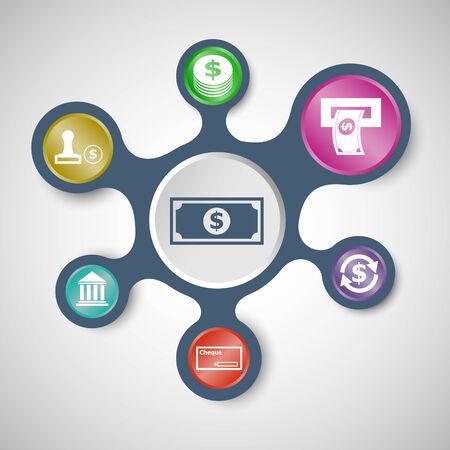Understanding Catch-Up Contributions and Their Impact
If youre approaching retirement age, maximizing your retirement savings becomes increasingly important. One of the most effective tools available is the catch-up contribution provision, designed specifically for individuals aged 50 or older. This IRS-approved feature allows eligible participants to contribute extra funds to their 401(k), 403(b), IRA, or similar retirement accounts beyond the standard annual limits. For example, in 2024, individuals can add up to an additional $7,500 in catch-up contributions to a workplace plan, on top of the regular $23,000 limit. Understanding eligibility requirements is straightforward: you must turn 50 by the end of the calendar year and participate in a qualifying plan. By ramping up your contributions during these critical years, you have a unique opportunity to accelerate your retirement savings and potentially close any gaps in your financial strategy. However, increasing contributions also impacts your asset allocation, risk exposure, and overall investment trajectory. Evaluating how these additional dollars fit into your current portfolio ensures that your path toward retirement remains balanced and aligned with your long-term goals.
2. Reassessing Your Time Horizon and Risk Tolerance
When you increase your catch-up contributions, it’s essential to revisit your time horizon and risk tolerance. These two factors should drive any adjustments to your asset allocation, especially as you approach retirement age or refine your financial goals. Age is a major determinant in how much risk you can reasonably take; the closer you are to retirement, the less time you have to recover from market downturns. At the same time, increasing your contributions can change your investment landscape, potentially allowing for more growth if you have a longer horizon or calling for more stability if retirement is near.
Key Factors to Consider
| Factor | Why It Matters | Impact on Asset Allocation |
|---|---|---|
| Age | Older investors typically need to reduce risk exposure as they have less time to recover from losses. | Shift toward bonds and income-generating assets as retirement nears. |
| Retirement Goals | Your desired lifestyle, spending needs, and planned retirement age influence required portfolio growth. | More aggressive allocation may be suitable if you plan to work longer or need higher returns. |
| Increased Contributions | Higher savings rates may allow for greater flexibility in investment choices. | May warrant reevaluation of equity/bond mix based on updated projections. |
Evaluating Risk Tolerance Amid Catch-Up Contributions
Your willingness and ability to withstand market volatility should be reviewed whenever your financial situation changes—especially when ramping up contributions. While contributing more may let you recover faster from short-term losses, it’s also crucial not to overexpose yourself if you’re nearing retirement. Use online risk assessment tools or consult with a financial advisor to quantify your current tolerance.
Aligning Investment Timeline With Contribution Strategy
If your increased contributions shorten your projected timeline to reach savings goals, you may want to gradually shift into more conservative investments sooner than originally planned. Conversely, if additional savings give you the confidence to retire later or spend more in retirement, maintaining a higher allocation to equities could be justified for longer-term growth.
Actionable Steps:
- Review your expected retirement date and reassess target savings milestones.
- Model different asset mixes using updated contribution rates and timelines.
- Update your investment policy statement (IPS) accordingly.
- Schedule regular reviews—at least annually—to keep your allocation aligned with both your evolving risk tolerance and time horizon.
By systematically evaluating these variables, you can ensure that your asset allocation strategy remains consistent with both your long-term goals and current financial reality as you leverage catch-up contributions.

3. Analyzing Current Asset Allocation
When increasing your catch-up contributions, it’s crucial to take a data-driven approach to evaluating your current asset allocation. Start by examining the proportion of stocks, bonds, and alternative investments within your portfolio. Use recent account statements and digital tools offered by most U.S. brokerage platforms to visualize your current mix. Consider how each asset class has performed historically during different market cycles, especially as you near retirement age and may want to reduce volatility.
Next, assess whether your allocation aligns with your risk tolerance and retirement timeline. For example, if you are in your 50s or early 60s, shifting some assets from aggressive growth stocks to more stable bonds or dividend-paying equities may make sense given the shorter horizon for recovery from potential downturns. Don’t overlook alternative investments—such as real estate funds, REITs, or commodities—which can offer diversification benefits but also carry unique risks.
To maintain alignment with both current market dynamics and your personal objectives, use analytical tools like Monte Carlo simulations or risk-assessment calculators widely available on American financial planning websites. These tools help forecast potential outcomes based on historical data and can guide adjustments to your asset mix. Remember that optimal asset allocation is not static; it should evolve as you increase contributions and move closer to retirement goals.
4. Strategically Adjusting Your Portfolio
When increasing your catch-up contributions, a strategic portfolio adjustment becomes crucial to ensure your investments align with your elevated savings goals and risk profile. The objective is to maximize growth potential without exposing yourself to unnecessary volatility—especially as retirement draws nearer. Below are actionable strategies you can employ:
Assessing Current Asset Allocation
Begin by reviewing your current mix of equities, fixed income, and alternative assets. This assessment should take into account your investment horizon, risk tolerance, and the number of years until retirement. At this stage, it’s common to gradually shift toward a more conservative allocation while still maintaining enough equity exposure to capture potential growth.
Rebalancing for Growth and Risk Management
Rebalancing is not just about reducing risk—it’s also about optimizing returns by systematically realigning your portfolio. Use this opportunity to:
- Reduce overexposed positions: Trim back on assets that have grown disproportionately large compared to your target allocation.
- Add to underweighted sectors: Increase allocations to asset classes that may offer higher growth potential or better diversification benefits.
- Consider age-based glide paths: Gradually adjust allocations in line with target-date fund methodologies if you prefer a set-it-and-forget-it approach.
Sample Asset Allocation Adjustments
| Asset Class | Pre Catch-Up (%) | Post Catch-Up (%) | Rationale |
|---|---|---|---|
| U.S. Equities | 40 | 35 | Slight reduction for lower volatility as retirement nears |
| International Equities | 20 | 15 | Diversify but mitigate currency and global risks |
| Bonds/Fixed Income | 30 | 40 | Increase for stable income and capital preservation |
| Alternatives (REITs, Commodities) | 10 | 10 | No change; maintain for inflation hedge and diversification |
Tactical Considerations During the Ramp-Up Period
- Dollar-cost averaging: When making larger or more frequent contributions, spread them out over time to reduce timing risk and smooth out market fluctuations.
- Tilt toward quality: Focus on blue-chip stocks and investment-grade bonds, which tend to be more resilient during market downturns.
- Review tax efficiency: Place higher-yielding or less tax-efficient assets in tax-advantaged accounts when possible.
- Ladder fixed income maturities: Build a bond ladder to help manage interest rate risk and provide predictable cash flow as you approach retirement.
The Bottom Line: Dynamic But Disciplined Adjustments
The intensified savings period brought on by ramped-up catch-up contributions is an ideal time to review and recalibrate your asset allocation. By strategically adjusting your portfolio, you can position yourself for optimal growth while managing downside risk—ensuring you make the most of these critical years leading up to retirement.
5. Tax Implications and Optimization
When increasing your catch-up contributions, it’s crucial to review how these larger deposits impact your overall tax situation. Catch-up contributions to accounts like 401(k)s and IRAs can significantly lower your taxable income in the years you make them, thanks to pre-tax deferrals. For example, if you’re 50 or older and maximize both standard and catch-up limits in a traditional 401(k), you could reduce your taxable income by over $30,000 annually, which may shift you into a lower tax bracket or reduce your marginal tax rate.
Understanding which accounts to prioritize is key for tax optimization. Traditional accounts provide immediate tax benefits by reducing current year taxes, while Roth accounts offer the advantage of tax-free withdrawals in retirement. Consider your expected tax rate in retirement versus today—if you anticipate being in a higher bracket later, Roth contributions might make sense even when making catch-up contributions.
To fully benefit from these strategies, be proactive about coordinating contributions across all eligible accounts. Check employer plan rules for catch-up eligibility and ensure your payroll deductions are adjusted accordingly. Also, monitor IRS annual contribution limits since they can change due to inflation adjustments.
Lastly, work with a qualified tax advisor or financial planner to model different scenarios and identify the most advantageous mix of traditional and Roth contributions for your unique circumstances. This data-driven approach will help you minimize taxes both now and in retirement while maximizing long-term growth through smart asset allocation.
6. Periodic Reviews and Rebalancing
As you increase your catch-up contributions and approach retirement, maintaining your desired asset allocation becomes even more critical. Market fluctuations can cause your portfolio to drift away from your original allocation targets, potentially exposing you to unintended risks or reducing growth potential. Conducting regular portfolio reviews—at least annually—is an essential practice for identifying these shifts. During each review, compare your current asset mix against your established targets for stocks, bonds, and other asset classes. If allocations have moved beyond your comfort zone or risk tolerance, rebalancing is necessary to realign your portfolio with your long-term goals.
Why Rebalancing Matters More Near Retirement
The closer you get to retirement, the less time you have to recover from market downturns. This makes it especially important to ensure that your investments are appropriately diversified and aligned with your evolving risk tolerance. As you ramp up catch-up contributions, large deposits can also impact your overall allocation percentages, requiring more frequent adjustments than before. Ignoring rebalancing at this stage could result in overexposure to volatile assets or missed opportunities for stable growth.
Best Practices for Effective Portfolio Management
- Set a Regular Schedule: Mark calendar dates—such as every six or twelve months—for comprehensive portfolio checkups.
- Establish Rebalancing Thresholds: Decide in advance how much drift (e.g., 5% deviation) will trigger a rebalance to avoid emotional decision-making.
- Evaluate Contribution Impact: Each time you make a catch-up contribution, assess whether it has altered your allocation enough to require immediate action.
Consider Professional Guidance
If managing these adjustments feels overwhelming, consider working with a financial advisor who can provide objective advice tailored to your retirement timeline and goals. Automated tools, such as robo-advisors, can also help maintain optimal allocations with minimal hands-on effort. Ultimately, consistent reviews and timely rebalancing are foundational strategies for preserving the integrity of your investment plan as you accelerate savings through catch-up contributions and prepare for a financially secure retirement.


